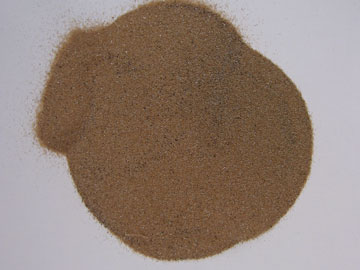Without Rare Earth Elements (REEs) a lot of the technology found in the 21st century would be impossible. These are things like alternate energy, rare earth magnets used in car’s alternators, computers, TVs and many other examples of modern technology. The rub and incidentally the demand for REEs are because 97% or the world’s total supply comes from China China China Saudi Arabia
 |
| Allanite one of the ores for REEs |
The Chinese extract REEs from clay using essentially the same long and tedious process as used for recovering uranium. However there is so much clay in the world that could contain REEs it remains to be seen if the Chinese are able to maintain their monopoly.
Many conglomerates also contain REEs associated with the radioactive elements thorium and uranium as they are seen in a quartz pebble conglomerate at Elliot Lake , Ontario Witwatersrand in South Africa
 |
| A pile of monazite sand another ore of REEs |
In that atmosphere the worldwide rush is on to discover new sources of REEs. According to Al Shafsky CEO of Pele Mountain Resources of Toronto his mining company is developing the largest known deposit of REEs in Canada Elliot Lake , Ontario Elliot Lake mines is actually uranium with REEs as a byproduct. Because they are able to be extracted from uranium ore by the same process REEs provide a valuable byproduct with a known market.
 |
| Piles of REE oxides |
Of the estimated 7,000 producing mines in the world there are very few producing REEs at the moment with most of them in mainland China Canada Elliot Lake , Ontario
 |
| A photomicrograph of a REE Magnet |
The best way of finding deposits of REEs in the field is with a Geiger or Scintillation counter the same as is used for finding thorium or uranium. REEs are always associated with these elements. A likely place to look for these elements is the conglomerate deposits of the American West, wherever uranium or vanadium mines were located during the mid-20th century. Most of the uranium in the United States Nebraska Wyoming
No comments:
Post a Comment